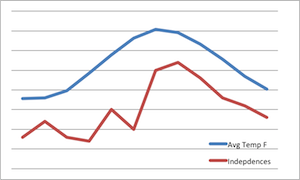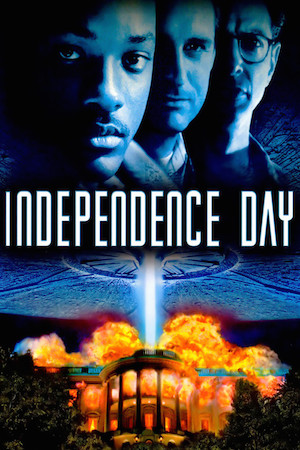Independence Days Around the World
Are you celebrating Independence Day? In the United States, we think of Independence Day as July 4. The same goes for Abkhazia, which became independent from the Republic of Georgia in 1993. In fact, there are 18 countries that celebrate their independence within a week of the Fourth of July. On the map below you’ll find 183 independence days around the globe.
View Independence Days Around the World in a full screen map
 July, it turns out, is a pretty popular month for independence. There are 25 countries that celebrate in July, second only to August’s 27. Perhaps there’s something to hot months, since most of these countries are in the northern hemisphere where July, August, and September (the third-most with 23) make up the summer months. The most common single day, September 15, supports the temperature theory. However, it’s tied with January 1, typically cold (but a great time to try something new).
July, it turns out, is a pretty popular month for independence. There are 25 countries that celebrate in July, second only to August’s 27. Perhaps there’s something to hot months, since most of these countries are in the northern hemisphere where July, August, and September (the third-most with 23) make up the summer months. The most common single day, September 15, supports the temperature theory. However, it’s tied with January 1, typically cold (but a great time to try something new).
If you’re looking for countries with independences in common, the most likely shared feature is the country from which they gained independence. If you paid any attention when you learned world history, the results will be unsurprisingly centered on the powerhouses of Europe. There are 60 countries who celebrate their independence from the United Kingdom, which is enough to make the Queen’s ears burn any month of the year.
France is next, with 24 independent countries. The earliest of the bunch is Haiti, which has been on its own since 1804, though French is still one of the Caribbean island’s official languages. Rounding out the top three is Spain (20 countries), with almost every one of its former colonies in central and South America.
One of the non-American countries to gain independence from Spain is Morocco. The north African country declared independence in 1956 from not just Spain, but also France. There are several countries that also gained independence from multiple countries at roughly the same time: Nauru (Australia, New Zealand and the United Kingdom), Sudan (Egypt and the United Kingdom), Malaysia (Federation of Malaya, North Borneo, Sarawak and Singapore), Cameroon (France and United Kingdom), Vietnam (Japan and France), Lithuania (Russia and Germany), Poland (Russia, Prussia, and Austria), Vanuatu (United Kingdom and France), Libya (United Kingdom and France), Somalia (United Kingdom and Italy), and Brazil (United Kingdom of Portugal, Brazil and the Algarves).
Interactive Maps Made Easy
Sign Up NowIf you’re old enough to remember the 1990s, you can probably guess which country had the most independent states in the shortest time. From March 11, 1990 (Lithuania) to December 16, 1991 (Kazakhstan), a dozen countries gained independence from the Soviet Union.
The fall of the USSR is one reason that the 1900s saw the vast majority of independence days mapped here. Many others happened after World Wars I and II. Another nearly 30 occurred in the 1800s, while a small handful were from several hundred years ago. The oldest is Hungary’s National Day, dating back to the year 1000. The Swiss celebrate a date nearly 300 years later, when the typically neutral country joined an alliance against the Holy Roman Empire. Sweden in 1523 and Portugal in 1640 practically seem recent in comparison.

The next-most recent, the United States from the British on July 4, 1776. That’s 220 years, almost to the day, before the biggest Independence Day of all: the release of the 1996 summer hit starring Will Smith fighting aliens.
